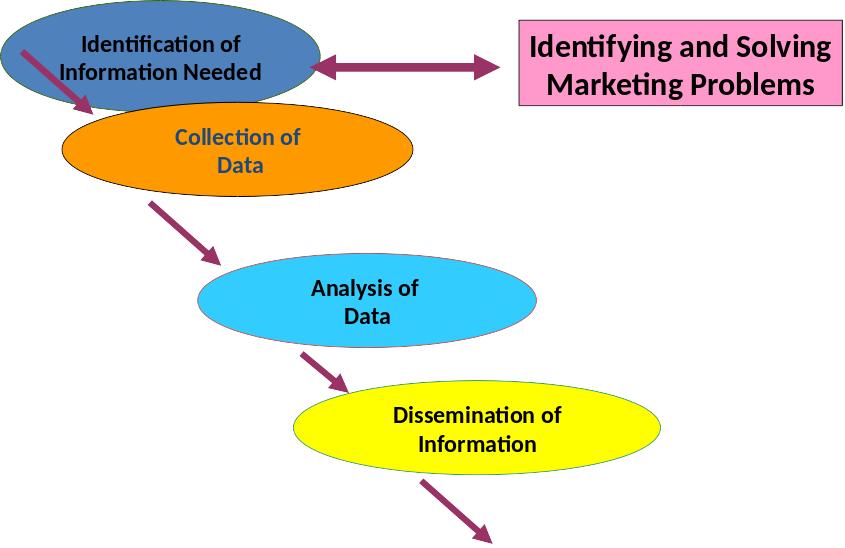
- •Definitions and history of Marketing
- •2.Marketing concepts
- •3. Selling Concept
- •4.External marketing environment
- •5.Macro environment
- •8. Market system
- •9.Demand Curve
- •10.Customers Behaviour
- •11.Custom Loyalty
- •12.Swot Analysis
- •13.Pestel Analysis
- •14.Marketing mix 4s
- •15.Markeing Mix 7Ps
- •16.Marketing mix Product
- •17.Branding
- •18.Promotion!
- •Introduction
- •21. Scheme of Marketing Research
- •Identification,
- •22. Questionary desighn
- •23. Segmentation Process:
- •27. Marketing Information System
- •28. Marketing Plan
- •29. Marketing control
21. Scheme of Marketing Research

Marketing research is the systematic and objective
Identification,
collection,
analysis,
dissemination, and
use of information
22. Questionary desighn
In everyday speech we ask questions. They are often misinterpreted or misunderstood, but it does not matter because we are there to ask the question again in another way. Between two people it is usually possible to resolve the question and answer.
If the mistakes and misunderstandings which occur between just two people are multiplied by the number of respondents in a sample, consider how catastrophic it could be. The researcher who designs the questionnaire for a survey usually gets only one chance to get it right.
Converting the rough questions which will meet the research objectives into questions suitable for a questionnaire presents possible pitfalls. We now consider what these are and how they could be avoided.
Questions open to misinterpretation: Misinterpretation is caused by ambiguous questions. Questions could be too loosely worded or contain words or phrases which have different meanings to different people. Words like 'frequent', good', 'useful', and 'often' are all open to misinterpretation unless qualified.
The researcher must try not to assume that the respondent is familiar with a wide vocabulary, respondents. What matters is that the respondent knows exactly what is meant. If he does not, there is a danger that he will guess the meaning and answer out of context.
Types of question
The researcher has three types of question within his tool box. Each fulfils a different purpose:
Behavioral questions. These answer the questions what, when, how and which. By and large they are factual. The researcher uses them to assess size, determine awareness levels etc.
Attitude questions. These measure image, attitude and opinion. They are, therefore, perceptions which may or may not be realistic. The researcher determines the position of a company from these questions.
Classification questions. The researcher needs to see if groups of respondents -think or act differently. Classification questions enable the researcher to cross-analyse the results and spot different characteristics among sectors.
Using these three types of question, the researcher designs questionnaires to meet the objectives of the survey.
23. Segmentation Process:
Identify the current and the potential needs of the customer existing already in the market to be segmented.
Identify the unique and distinguishable features that may divide the market into segments.
Select those segments which offer higher potential and which will also be amenable to the offering of the firm.
Segmentation involves finding out what kinds of consumers with different needs exist. In the auto market, for example, some consumers demand speed and performance, while others are much more concerned about roominess and safety. In general, it holds true that “You can’t be all things to all people,” and experience has demonstrated that firms that specialize in meeting the needs of one group of consumers over another tend to be more profitable.
24. Business Market Segmentation
Geographic segmentation – based on regional variables such as customer concentration, regional industrial growth rate, and international macroeconomic factors.
Custom type – based on factors such as size of the organization, its industry, position in value chain, etc.
Buyer behavior – based on factors such as loyalty to suppliers, usage patterns, and order size.
25. A market segment should be:
Measurable
Durable (not changing too quickly)
Substantial enough to be profitable
Accessible by communication and distribution channels
It is internally homogeneous (potential customers in the same segment prefer the same product qualities).
It responds similarly to a market stimulus.
It can be cost-efficiently reached by market intervention.
26. Target Market Strategies:
Single-segment strategy - also known as a concentrated strategy. One market segment (not the entire market) is served with one marketing mix .
Selective specialization - Selective specialization. This is a multiple-segment strategy, also known as a differentiated strategy. Different marketing mixes are offered to different segments.
Product specialization -The firm specializes in a particular product and tailors it to different market segments.
Market specialization -The firm specializes in serving particular segment and offers it a large variety of products
Positioning
It is all about placing a product / brand in the minds of the customer to occupy a stable, distinct and permanent place in their rational and conscious mind set.
According to Al Ries and Jack TroutAl Ries and Jack Trout: ” Positioning is not what you do to your product, but what you do to the mind of your prospective customer”.
Thus it is all about winning a distinct place in the minds of the customer.
Repositioning involves changing target market or distinct positioning claim/differences advantages or both to bring the saturated attention of the existing customers back into the limelight once again to survive safely and happily in the market. In some cases, the products that happily in the market. In some cases, the products that are faring well are repositioned.
